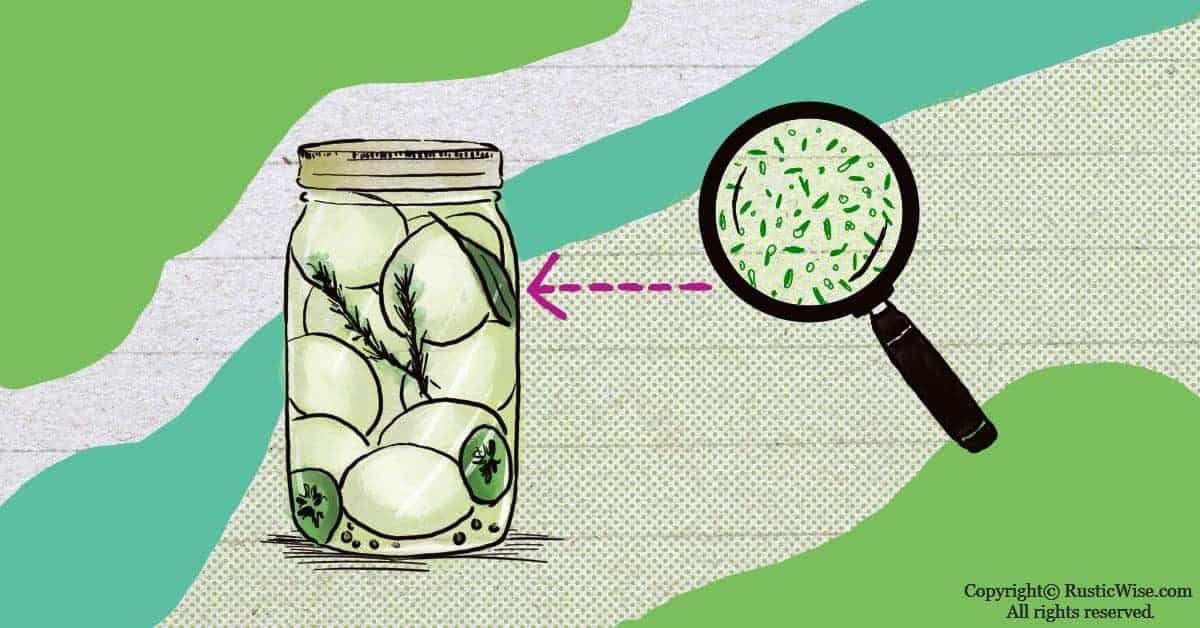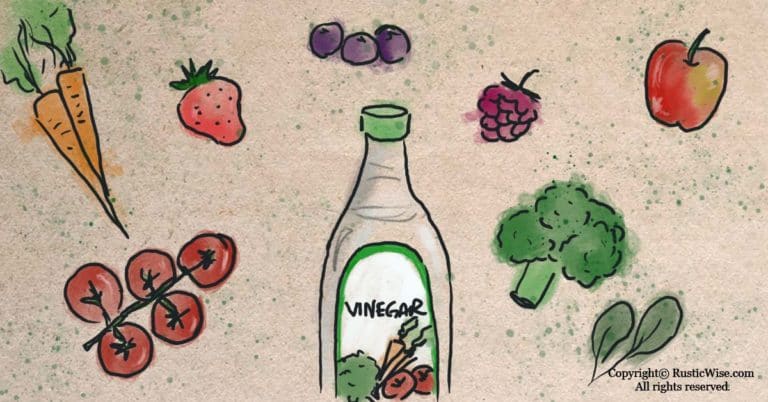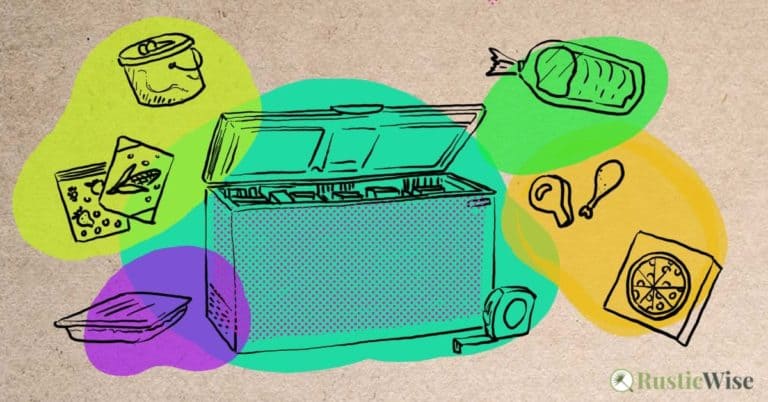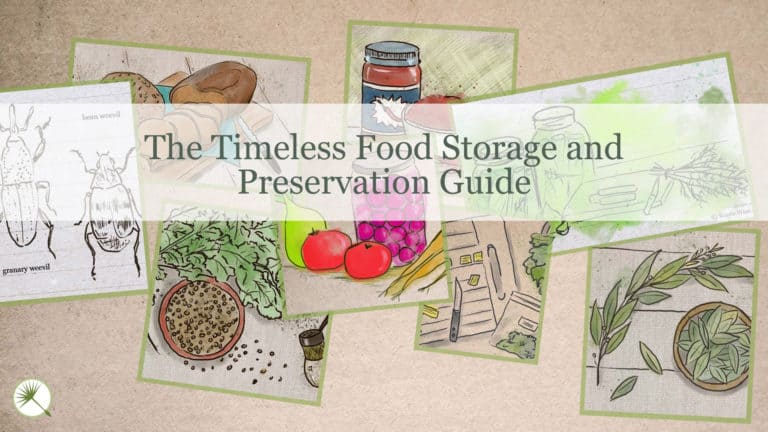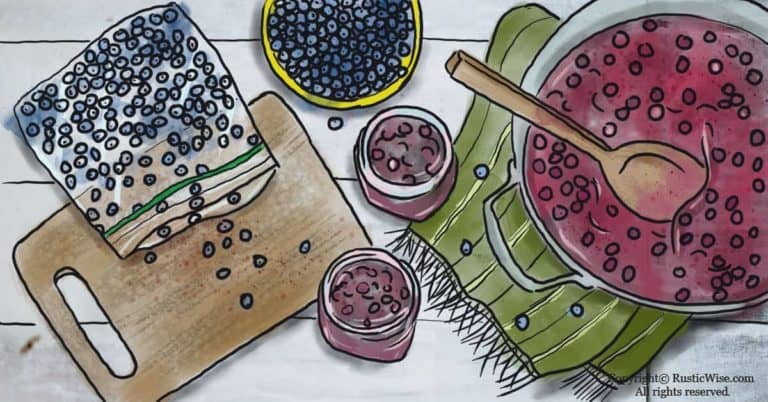How Long Does It Take for Botulism to Grow in Canned Food?
Botulism is a rare but serious foodborne illness that can be fatal. If you happen to have a few jars of food with questionable contents, you may be wondering, how long does it take for botulism to grow in canned food? Botulism poisoning is caused by the bacterium Clostridium botulinum, which grows in low-acid foods and produces toxins that cause paralysis, and in extreme cases, death. According to the U.S. Department of Agriculture (USDA), under the right conditions, botulinum, “…spores produce vegetative cells which multiply rapidly and may produce a deadly toxin within 3 to 4 days…”
As botulism is such a threatening issue when it comes to canning food at home, it’s important to know what you need to do to prevent this from happening. These toxins thrive under conditions of low oxygen, high moisture, and low acidity—in other words, botched canning jobs.
Botulism poisoning occurs when you eat foods that contain the botulinum toxin. If you have any doubts about the safety of either homemade or store-bought canned foods, toss it—better safe than sorry!
Home canning is an age-old tradition. Before we scare you away from canning, rest assured that many families can hundreds of jars of food a year without any botulism poisoning. With proper knowledge of canning safety practices , you can keep botulism at bay (and reap the benefits of tasty homemade food).
Types of botulism
All forms of botulinum bacterium are lethal and toxic. While we touched on foodborne botulism, there are actually four main types of human botulism according to the World Health Organization (WHO)—three other strains affect animals:
- Foodborne botulism: Caused by the ingestion of contaminated foods. Most foods are low-acid foods such as vegetables (beets, green beans, mushrooms, and spinach) as well as fish and meat products. Botulism poisoning proves fatal in between 5 and 10 percent of cases. Foodborne botulism does not transfer from person to person.
- Infant botulism: Occurs typically in infants less than 6 months old. Infants may ingest C. botulinum spores which then grow in the gut to produce dangerous toxins. This is why it’s advised not to feed infants honey (which may contain botulism spores) until an infant is at least 1-year-old.
- Wound botulism: Botulinum bacteria enter the body through an open wound and then quickly multiply.
- Inhalation botulism: While this form is extremely rare, it’s often linked to events (either accidental or intentional) such as bioterrorism.

Credit: CDC (Public Health Image Library), #2107.
Botulism is all around us
First things first: let’s get a few terms and facts straight. A resilient type of bacteria called Clostridium botulinum causes botulism poisoning. Seed forms of these bacteria are called spores.
Botulism is all around us.
If the thought of botulinum bacteria all around gives you the creeps, don’t worry, most strains of this are harmless.
It’s in the soil (which means it’s also on the fruits and vegetables you harvest or buy from the grocery store).
It’s also in water. Plus, it can survive for years.
This is why it’s important to thoroughly wash all your produce with clean water before eating (and especially before canning).
However, the botulinum found in the soil and on fresh produce isn’t poisonous. These bacteria become a hazard under certain conditions. Which leads us to the next section…
The ideal environment for botulinum to thrive in
Under the right conditions, bot bacteria can quickly multiply and produce seeds called spores. These spores are particularly resilient and nasty and can withstand extremely high temperatures.
What are these conditions that allow spores to develop, you ask? Botulinum loves environments with:
- Low acidity
- Moist conditions
- Low oxygen (less than 2 percent)
- Warm temperatures between 40 and 120 degrees Fahrenheit (4 and 49 degrees Celsius).
If you think of about canned food and how it’s stored, it provides the right conditions for nasty botulinum spores to spread:
Moist conditions. Check.
Anaerobic conditions (low or no oxygen). Check.
Room temperature. Check.
Sometimes the way in which food is stored plays a crucial role. A man died of botulism from improperly stored homemade pickled eggs (note to self—pickled eggs must always be kept in the refrigerator!).
What about low acidity? Low acid foods are those with a pH of 4.6 or higher. Anything with a pH of 4.6 or lower is considered acidic, or high acid, and can be processed using a water bath canner. This includes most vegetables, meat, eggs, dairy, poultry, and seafood.
Acidity levels play an important role in canning foods. High-acid foods (like most jams, jellies, fruits or pickling recipes) require less time and can be processed at a lower temperature.
Note: Most botulism troubles at home occur with improperly processed low-acid foods. Typically, the food isn’t processed long enough to successfully kill all bacteria; or a pressure canner wasn’t used. It’s important to follow all safety precautions and your recipe’s instructions to-a-tee. High-acid foods such as pickles for example, don’t provide an inviting home for botulism.
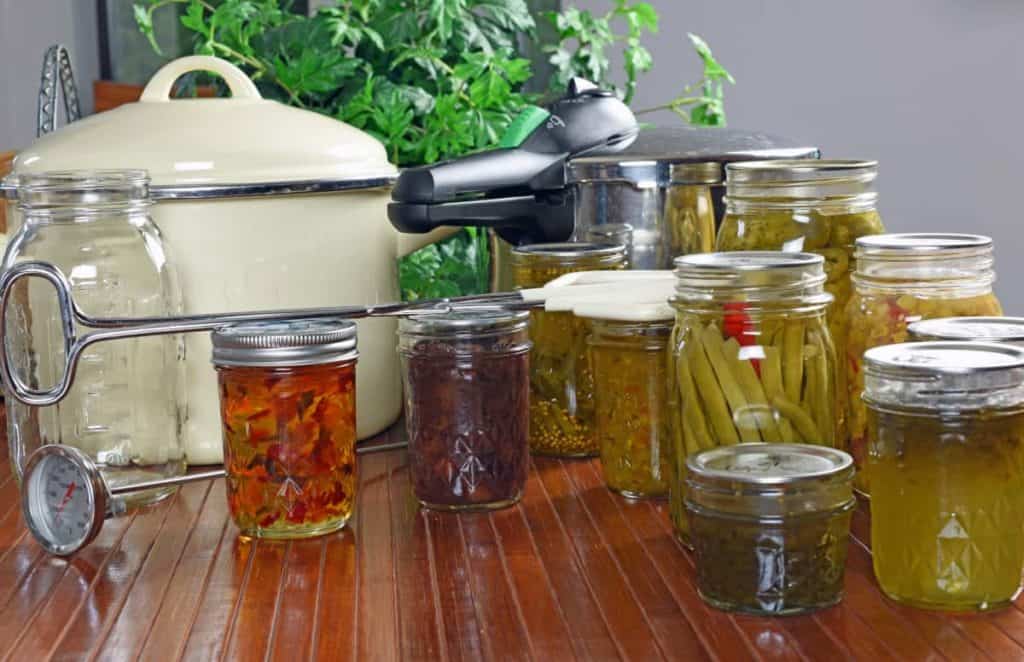
What you can do to prevent botulism when canning food
The best way to stop C. botulinum bacteria from growing is by following these simple home canning safety steps:
Tip: The combination of high heat (achieved only using a pressure canner) , plus the recommended PSI, and the proper processing time (adjusted for altitude) is the key to killing botulinum bacteria.
How can you tell if food has botulism?
Botulism by itself is difficult to detect as it’s a colorless and odorless bacteria.
However, there are often accompanying signs of spoilage to look for:
- Weak or broken seal
- Oozing or spurting liquid
- Mold
- Strong, unpleasant odor
- Air bubbles rising in jar
- Leaking liquid
- A change in the color, texture or clarity (cloudiness)
If you see any of these signs in homemade or store-bought canned foods, safely dispose of the food. Don’t try to salvage the food by scooping out the discolored or moldy parts.
Symptoms of botulism poisoning
Symptoms may occur anywhere from 4 hours to 8 days after ingesting contaminated food. Botulism attacks the nervous system that eventually leads to paralysis and respiratory failure.
According to the Centers of Disease Control and Prevention (CDC), here are a few signs of foodborne botulism poisoning:
- Blurry, or double vision
- Slurred speech
- Droopy eyelids
- Difficulty swallowing food
- Dryness in the mouth
- An odd sensation in the tongue
- Overall muscle weakness
If you or someone you know experiences any of the above symptoms, please seek medical help immediately.
How to safely dispose of food with botulism
Remember that botulinum toxins are dangerous even in small amounts—it may also enter the body through the skin so remember to wear a pair of gloves!
Ensure all young children and pets are kept at a safe distance and don’t touch contaminated food.
- Place contaminated jars in a trash bag for disposal and seal it shut. It’s a good idea to double-bag it.
- Don’t try dumping it down the sink or garbage disposal.
- If any liquid has spurted or leaked from jars make a bleach solution with 1/4 cup bleach per 2 cups of water. Completely cover the surface of the leak with the bleach solution and place a layer of paper towels on top. Let it sit for 15 minutes. Wipe and discard.
- Wash your hands thoroughly for 2 minutes with soapy water.
How common is foodborne botulism?
If all this talk of botulism and (potential) death has you freaked out, don’t fret. While not unheard of, foodborne botulism is fairly rare.
The CDC reports that on average, about 110 cases of botulism occurs in the U.S. every year with only one-quarter being related to foodborne illness. So, this is roughly 28 cases of foodborne botulism a year.
Conclusion: how long does it take for botulism to grow in canned food?
Canned food is a convenient and healthy way to enjoy your favorite foods, but it’s important to remember to follow a few safety precautions when home canning. So, how long does it take for botulism to grow in canned food? Well, under the right conditions, the spores can produce deadly toxins within 3 to 4 days.
Botulism is a serious form of food poisoning that can result in death. Hopefully, you’re now armed with the knowledge about how foodborne botulism poisoning occurs, and how you can safely prevent it from growing!


Author: Theresa Tesolin
Theresa is co-founder of RusticWise. She helps people unleash their inner DIY spirit by encouraging them to get dirty and make or grow something from scratch.

